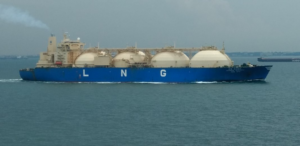
There are many winners and losers in war, but one of the biggest winners has been the U.S. LNG (Liquified Natural Gas) industry.
After the Russian invasion of Ukraine, Europe scrambled to ween itself off Russian gas as soon as possible. And U.S. LNG suppliers profited handsomely from the opportunity. As Europe rushed to fill its gas storage to the brim before the onset of winter, LNG prices spiked, leaving some Asian buyers priced out.
Therefore, it is hardly surprising that in the first eleven months of last year, the U.S. industry increased shipments to Europe by over 137% compared to the previous year. And it is equally unsurprising that the United States looks set to remain Europe’s top LNG seller in 2023.
Ironically, the war came at an optimum time for the US LNG industry. Back in October 2021, the French government caused shockwaves within the industry after it forced the French firm Engie to pull out of a $7 billion, 20-year contract to buy LNG from the U.S. over concerns the gas was too dirty, especially as it came from the Permian basin.
As Politico reported at the time, the French government, a part owner of Engie, told the company to cancel the contract “because of concerns that U.S. natural gas producers emit too much methane.”
There has been growing concern about methane emissions from the Permian, with evidence of very high emissions rates emerging from multiple studies (see here and here too). But as Russia invaded, climate concerns went out the window as security of supply became the overriding issue for Europe.
But now, as European nations negotiate with US suppliers over new LNG deals, climate is forming a barrier to the deals U.S. suppliers are seeking. The Financial Times reports that Europe’s climate goals are deterring “buyers from making long-term fossil fuel supply commitments.”
The U.S. LNG industry’s business model requires customers to sign decades-long contracts to secure the billions in finance needed to build new export capacity. Some Europeans were prepared to do this last year, but it seems they are pulling back. Leading LNG companies complain that European climate commitments are putting off European buyers.
Nick Dell’Osso, chief executive of Chesapeake Energy, one of the largest U.S. gas producers, told the FT: “[European] buyers are fearful of their governments telling them they can’t buy hydrocarbons 15 or 20 years from now.” He added that “[Things] are at a bit of a loggerheads right now.”
Not only would many climate scientists and activists argue that the American fossil fuel industry should have no say on EU climate goals, but also that there is no future in LNG anyway. Pouring billions into new export terminals is incompatible with climate goals and could lead to stranded assets.
Indeed, Reuters is reporting that the relatively high price of U.S. LNG imports “may work against U.S. LNG exporters and speed up Europe’s campaign to reduce reliance on energy product imports by generating more power supplies at home.”
Ironically as LNG exporters bemoan European climate goals, the Washington Post recently exposed the U.S. gas industry hiring Democrats to profess its climate credentials. The industry has set up a front organization entitled “Natural Allies for a Clean Energy Future”, with the explicit goal of convincing Democratic voters that gas is a “clean” energy source.
This comes straight from an outdated public relations playbook and is bound to fail. The problem for the industry is that despite its spin, it still has a chronic methane leakage problem. And it is still a fossil fuel. It remains part of the problem, not the solution to climate change.


Its ridiculous to even think of new fossil fuel extraction investments now. Ridiculous, unethical and irresponsible to engage in long term exposure to fossil fuels. I wonder how these fossil fuel stake holders rationalise their actions to themselves and to their investors.